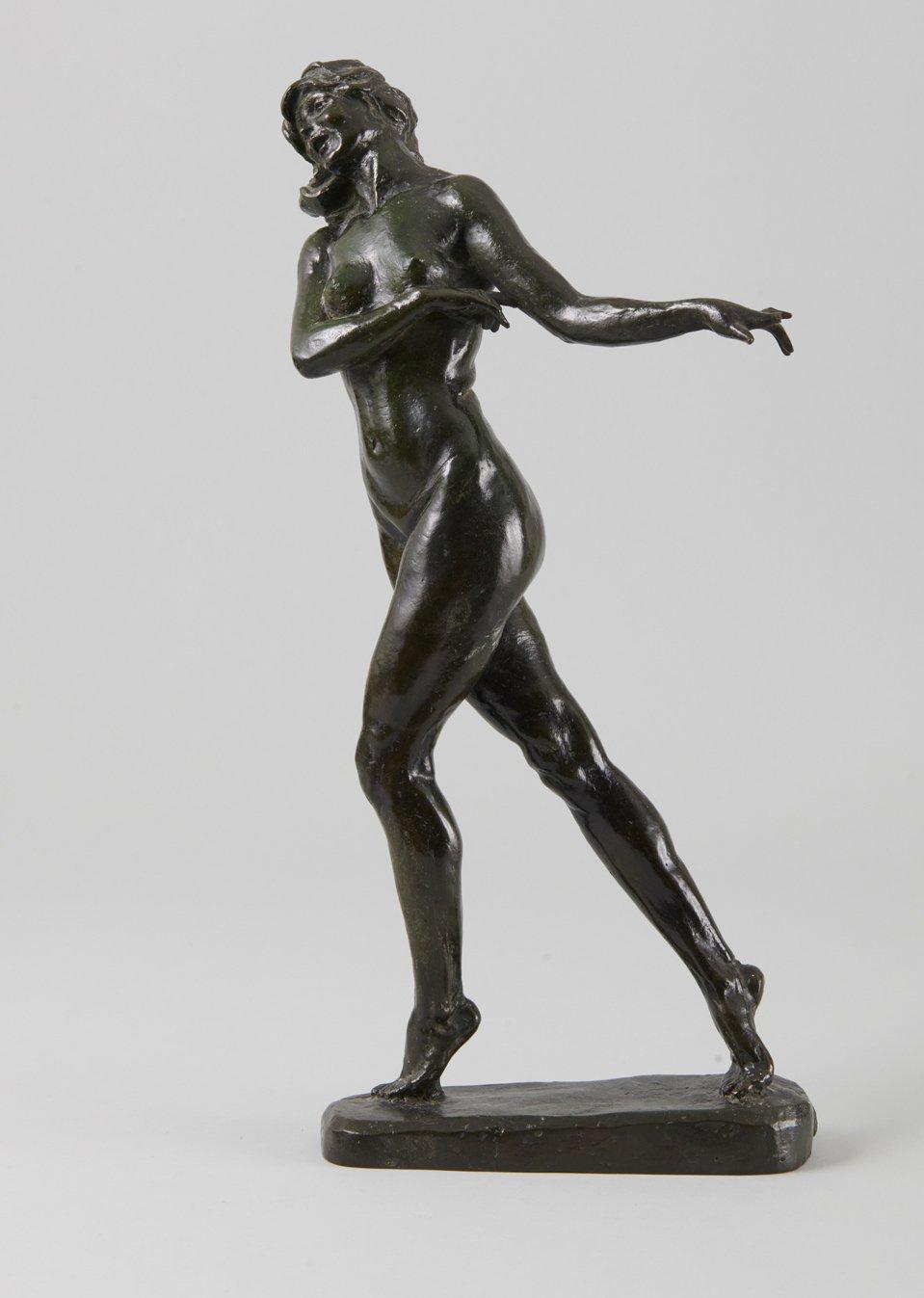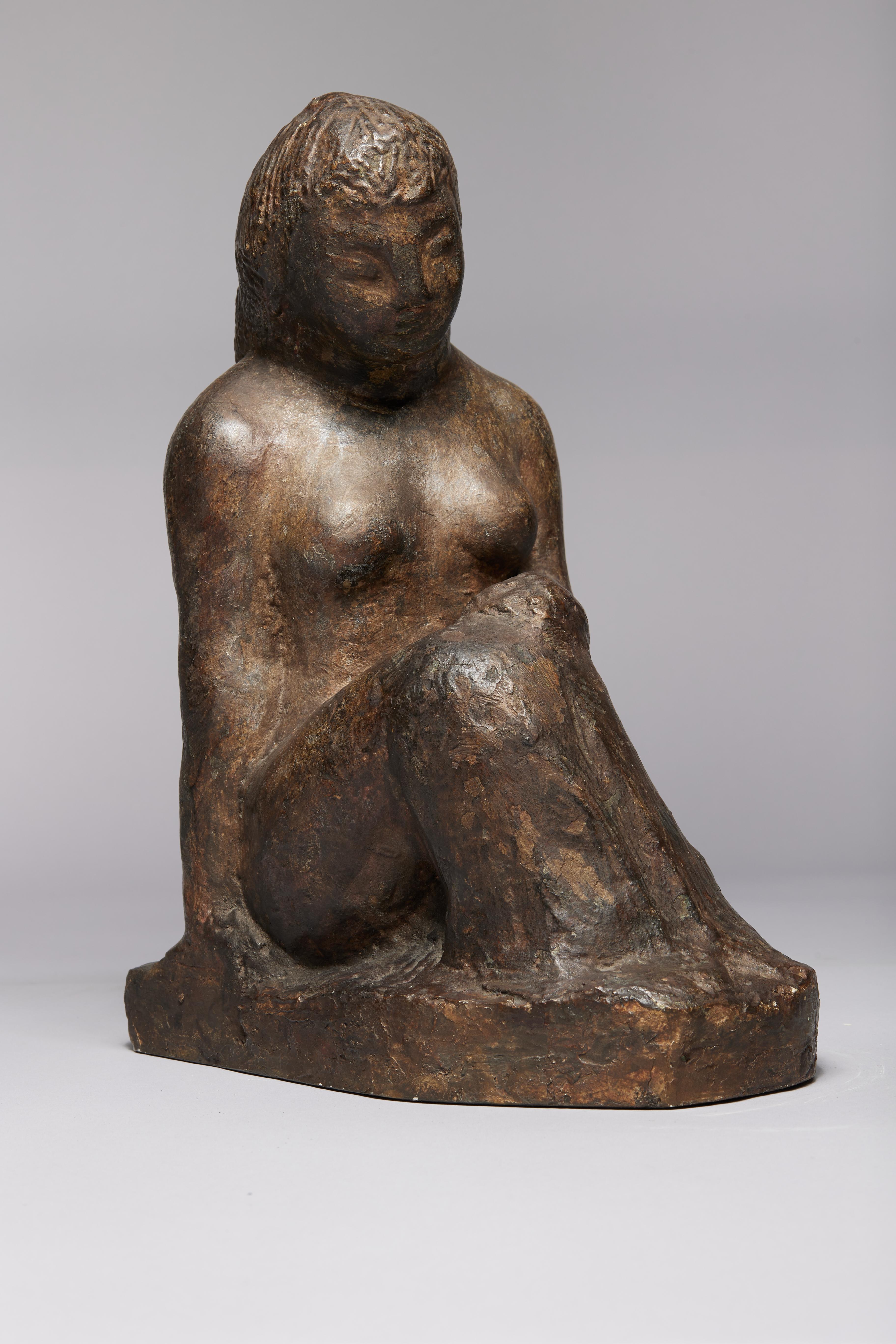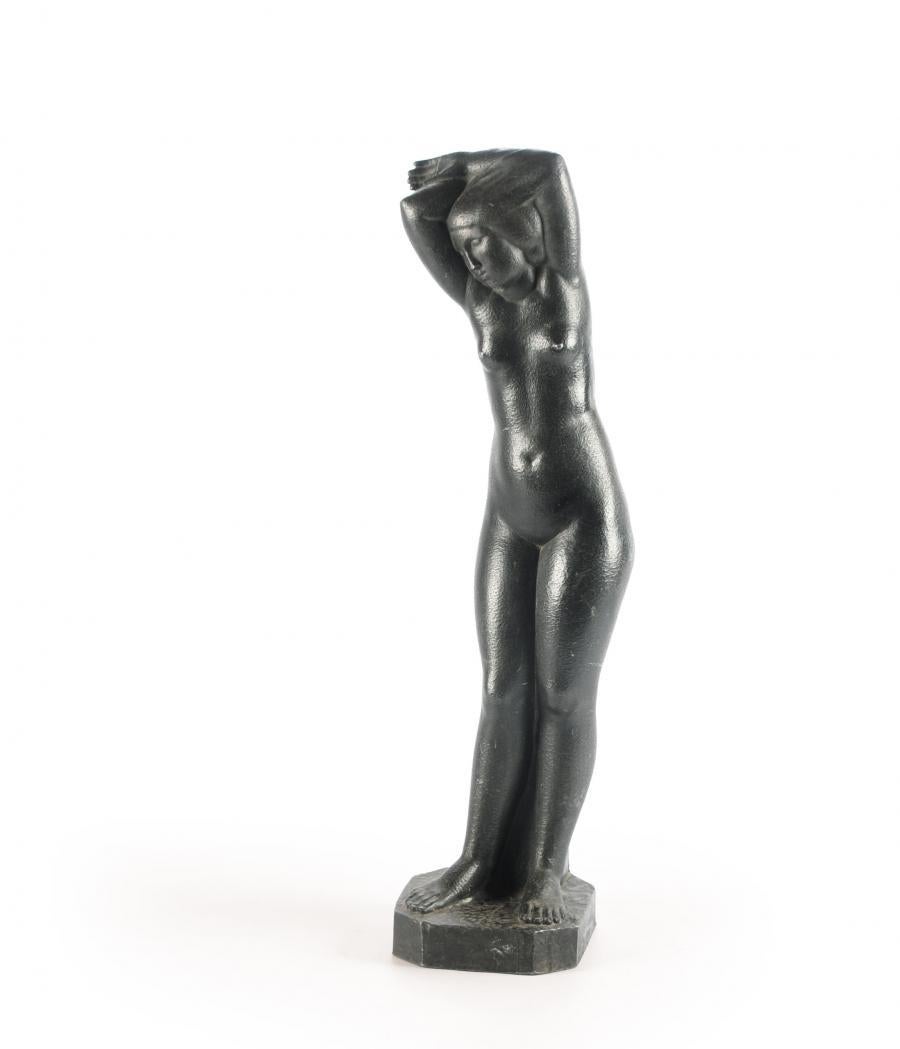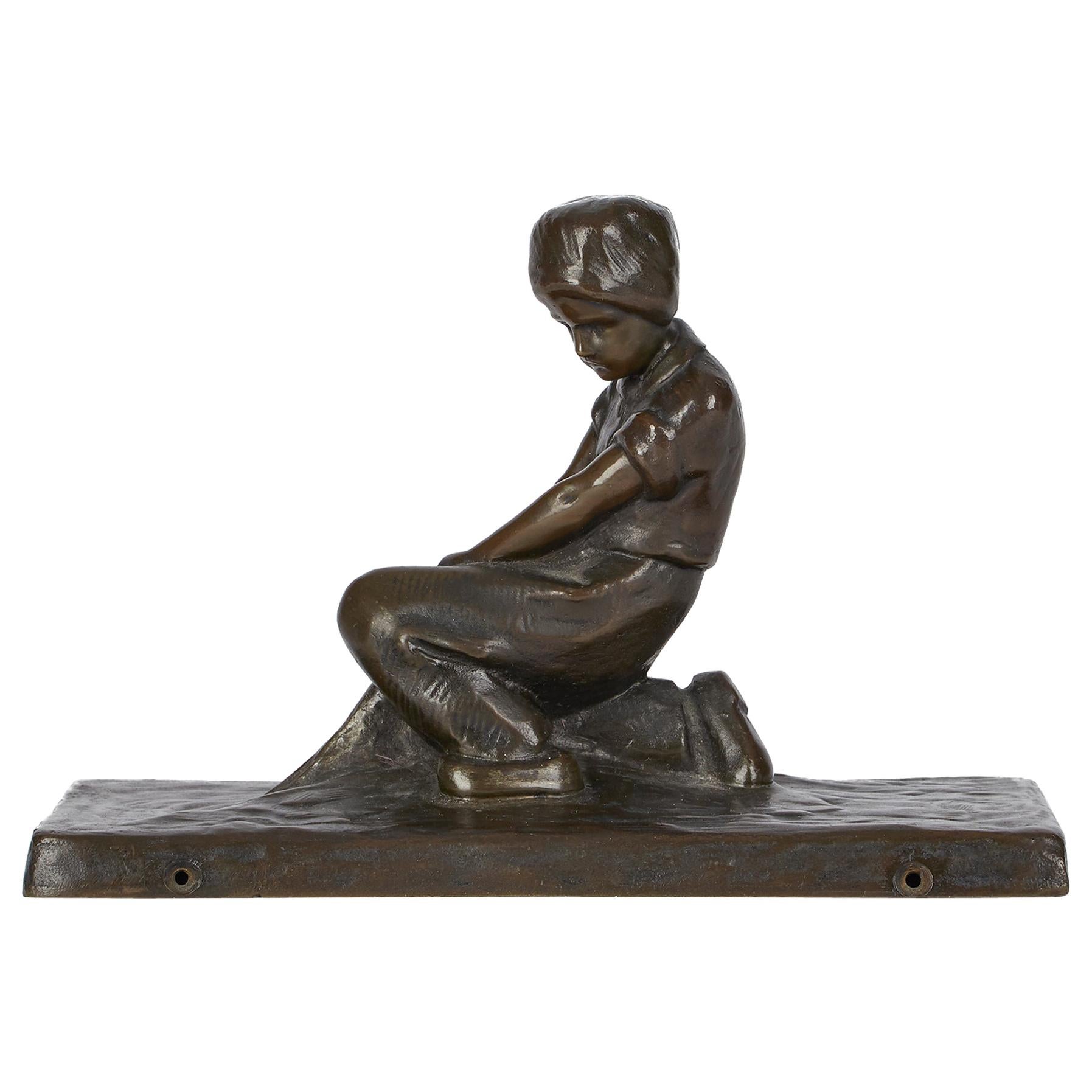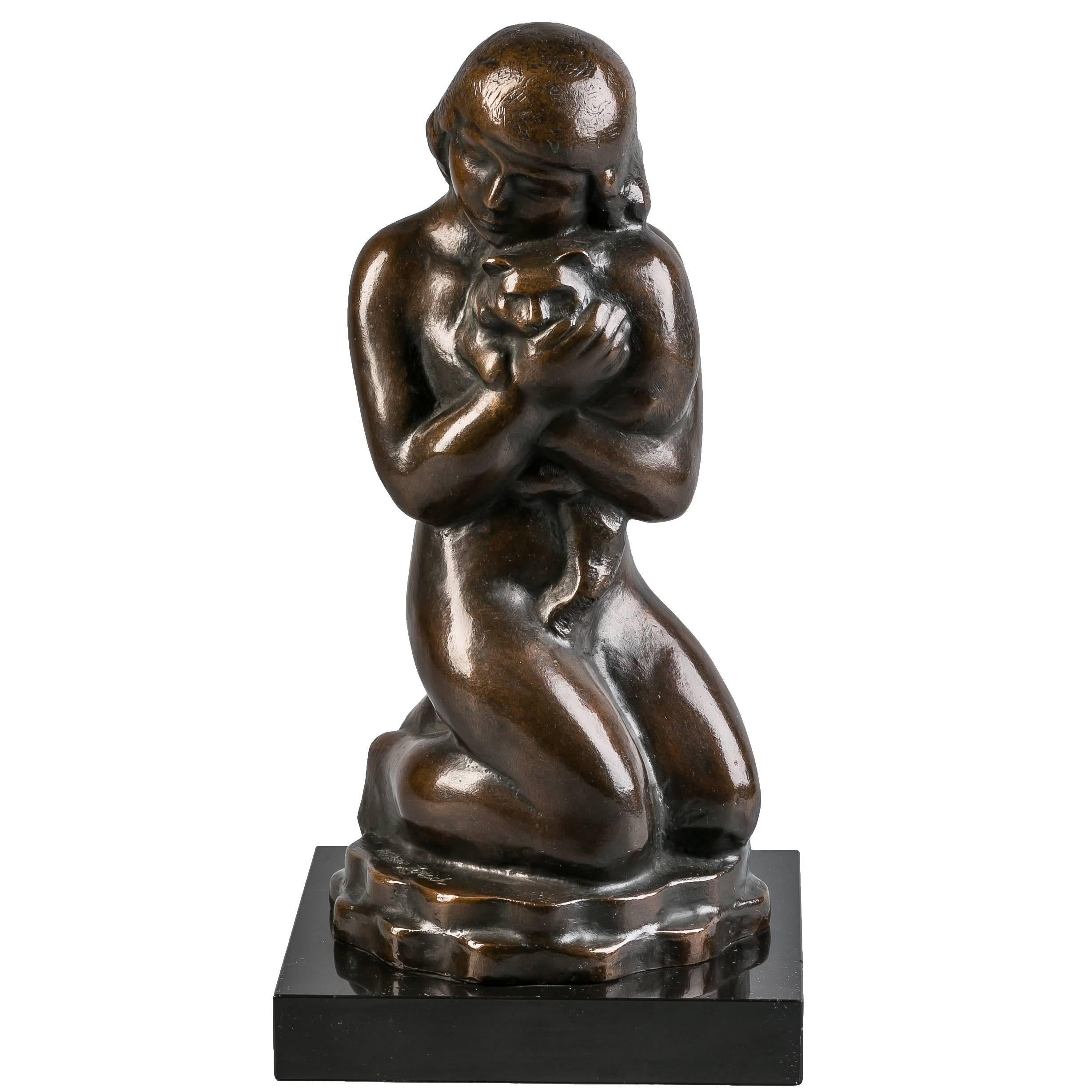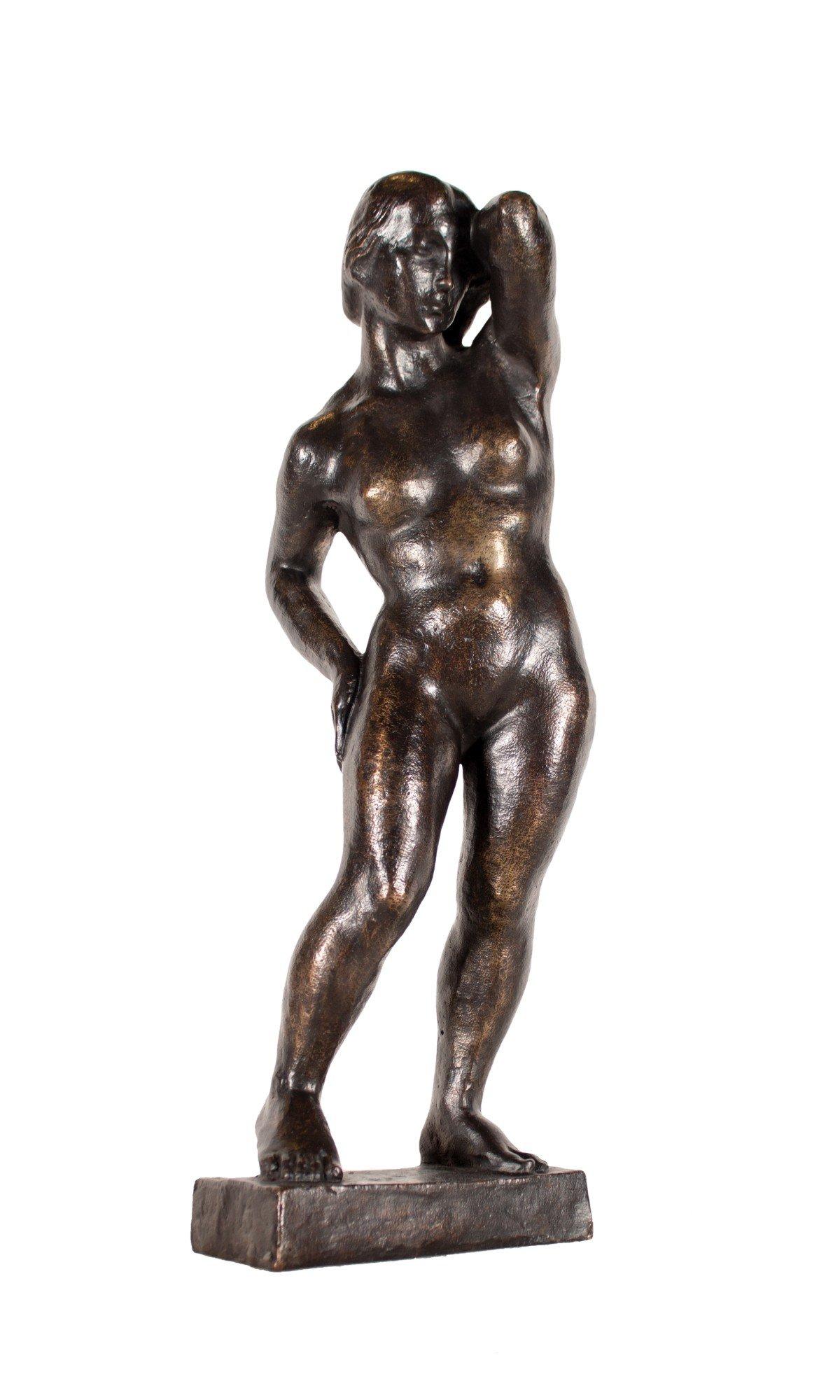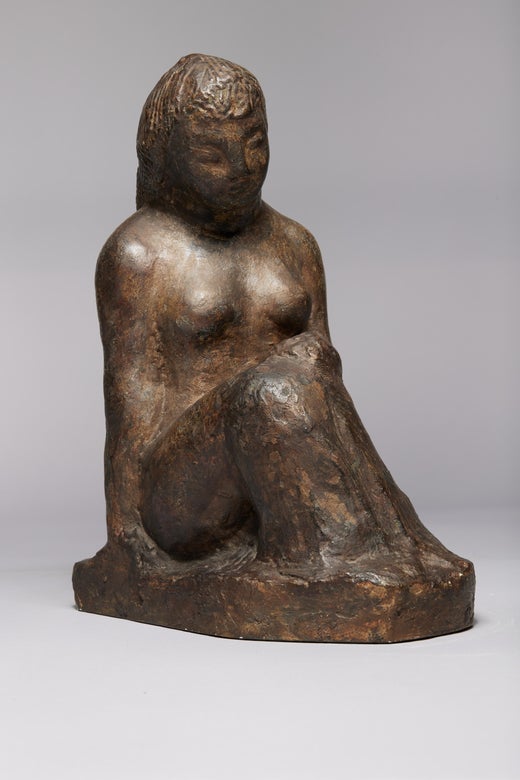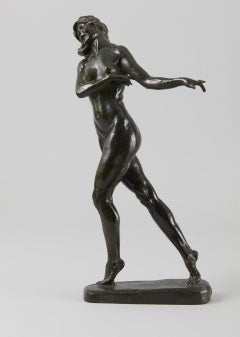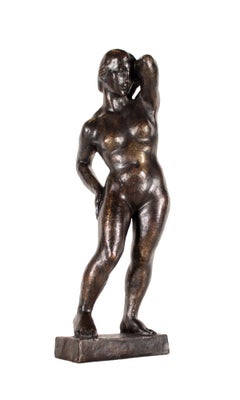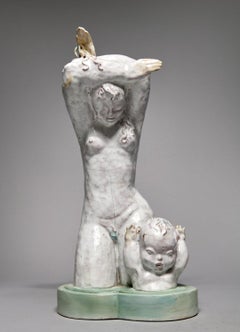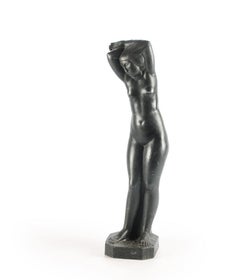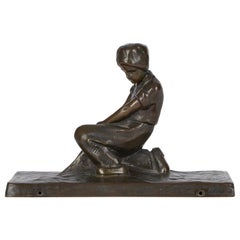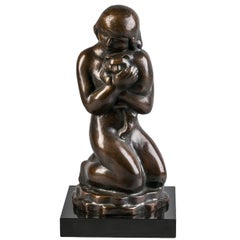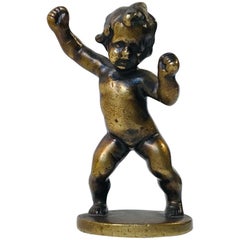Items Similar to First Steps, Early 20th Century Bronze Sculpture, Cleveland School
Want more images or videos?
Request additional images or videos from the seller
1 of 5
William ZorachFirst Steps, Early 20th Century Bronze Sculpture, Cleveland School1918
1918
$5,500
£4,201.14
€4,827.58
CA$7,851.29
A$8,608.32
CHF 4,495.20
MX$103,590.33
NOK 56,654.80
SEK 53,270.08
DKK 36,053.11
About the Item
William Zorach (American 1891-1966)
First Steps, 1918
Bronze
8.5 x 5 x 4 inches, including base
Born in 1887 in Lithuania, William Zorach immigrated with his family to the United States when he was just four years old, settling in Cleveland, Ohio. Zorach displayed an exceptional artistic talent at a young age and, at the recommendation of his seventh-grade teacher, began studying lithography at night at the Cleveland School of Art. It was not long before he was apprenticing at a lithography company in Cleveland. It was there that he realized he wanted to become an artist - to escape the commercial end of the field in which he was suddenly immersed.
In 1907, Zorach saved enough money to move to New York and study art at the National Academy of Design, where he received several awards for his paintings and drawings. He continued his studies in Paris in 1910 at La Palette. This year abroad would turn out to be quite fruitful because in Paris he was greatly influenced by the Cubist and Fauvist movements and had several paintings exhibited at the Salon d'Automme. This influence and subsequent success fueled his career back in the states where he was honored with his first one-man exhibition. Due to this new-found stability, he married a young woman he met at school in Paris, and they moved to New York and set up a studio. Shortly after, their work was accepted into the famous 1913 Armory Show.
For the next nine years, Zorach continued to think of himself as a painter, although he had already begun to experiment in sculpting. He was experiencing modest success with his painting and was therefore reluctant to abandon it completely. However, he was impelled toward sculpting, and in 1922, he painted his last oil.
Zorach's involvement with sculpture began largely be accident. While he was working on a series of wood-block prints, Zorach suddenly became more interested in the butternut panel than the print and turned the panel into a carved relief. With no formal training as a sculptor, Zorach's first sculptures were of wood and his carving tools were primitive, such as a jack-knife. I n fact, his early works have a certain stylized look, suggesting the influence of various primitive arts such as African and American folk.
Zorach found his sculptural direction by instinct, but was not unaware of what other sculptors were doing, both here and abroad. He soon allied himself with a growing number of modern sculptors who believed in the esthetic necessity of carving their own designs directly in the block of stone or wood rather than modeling them in clay. From the beginning he found a deep satisfaction in the slow and patient process of freeing the image from its imprisoning block, watching the forms emerge and appear.
"The actual resistance of tough material is a wonderful guide," Zorach said in a lecture on direct sculpture in 1930. The sculptor "cannot make changes easily, there is no putting back tomorrow what was cut away today. His senses are constantly alert. If something goes wrong there is the struggle to right the rhythm. And slowly the vision grows as the work progresses." Zorach also found that the material itself had a constantly modifying effect on the artist's vision. The grain of the wood, the markings in the stone, the shape of the log or boulder all set limits and suggested possibilities. He was always sensitive to the characteristic qualities of his material and occasionally let them play a major role in determining his forms. In works such as these, the feel of the original material is preserved in the finished piece and is often heightened by leaving parts of the original surface untouched and other areas roughly marked by the sculptors tools.
In 1923 Zorach bought a farm in Maine, where he and his family would spend their summers. He continued to sculpt and was soon recognized as one of the country's premier artists, honored with multiple commissions throughout the country and exhibitions at the Art Institute of Chicago, the Dallas Museum of Fine Art, the McNay Art Institute, and the Whitney Museum of American Art, among others. Today his work can be found in such prestigious museums as the Metropolitan Museum of Art, the Museum of Modern Art, the Whitney Museum of American Art, the Art Institute of Chicago, the Boston Museum of Fine Art, the Los Angeles Museum of Art, the Brooklyn Museum and the Cleveland Museum of Art.
In all, Zorach's sculpture is not outwardly American. It deals with the universal themes of life. He ultimately played a major role in rescuing American sculpture from the neo-classical tendencies and illustrative modeling which dominated it at the turn of the century. He helped to develop an isolated avant-garde in this country due in part to his focus not only on universal themes but on the intrinsic beauty of his material, sensuous tactile values, subtlety of modeling and a variety of imagery.
- Creator:William Zorach (1887 - 1966, American)
- Creation Year:1918
- Dimensions:Height: 8.5 in (21.59 cm)Width: 5 in (12.7 cm)Depth: 4 in (10.16 cm)
- Medium:
- Period:
- Condition:
- Gallery Location:Beachwood, OH
- Reference Number:1stDibs: LU1768215320252
William Zorach
Born in 1887, by 1930, he was one of America’s premier 20th century sculptors and was honored with multiple commissions and exhibitions including at the Art Institute of Chicago, the Dallas Museum of Fine Art, the Whitney Museum of American Art, and numerous others. He studied in New York City at the National Academy of Design and also in Paris under the mentoring of Jacques-Emile Blanche. It was in Paris in the first decade of the 20th century where Zorach’s path crossed with Marguerite, his soon to be wife. Both Marguerite and William were both represented in the landmark Armory Show of 1913. William continued to paint for the next two decades, but increasingly experimenting with sculpture. By the mid 20’s he was carving significant works in marble and stone. By the early 30’s, he abandoned painting entirely in favor of a new art form, sculpture. I t was in sculpture that Zorach found his true voice as an artist and achieved considerable success. “Sculpture, direct carving, was an expanding universe, a liberation and a natural form of expression to me.” Zorach stated. Museum Collections: Amon Carter Museum of American Art
Arizona State University Art Museum
Boca Raton Museum of Art
Butler Institute of American Art
Cleveland Artists Foundation
Colorado Springs Fine Arts Center
Cornish Colony Museum
Dallas Museum of Art
Delaware Art Museum
Edwin a Ulrich Museum of Art
Farnsworth Art Museum
Flint Institute of Arts
Frederick R Weisman Art Museum
Georgia Museum of Art
Herbert F Johnson Museum of Art
Jack S Blanton Museum of Art
LaSalle University Art Museum
Los Angeles County Museum of Art
Lowe Art Museum
Marion Koogler McNay Art Museum
Memorial Art Gallery
Metropolitan Museum of Art, NYC
Middlebury College Museum of Art
Minneapolis Institute of Arts
Mobile Museum of Art
Museum of Fine Art-Boston
Pennsylvania Academy of the Fine Arts
Portland Museum of Art
Smithsonian Museum of Art
The Brooklyn Museum of Art
The Canton Museum of Art
The Columbus Museum of Art-Ohio
The Columbus Museum-Georgia
The Cummer Museum Of Art & Gardens
The Currier Museum of Art
The Nelson-Atkins Museum of Art
The Newark Museum
The Phillips Collection
The Phillips Museum of Art
The University of Michigan Museum of Art
Whitney Museum of American Art
Worcester Art Museum
Yosemite Museum
About the Seller
5.0
Platinum Seller
Premium sellers with a 4.7+ rating and 24-hour response times
Established in 1975
1stDibs seller since 2022
39 sales on 1stDibs
Typical response time: <1 hour
- ShippingRetrieving quote...Shipping from: Beachwood, OH
- Return Policy
Authenticity Guarantee
In the unlikely event there’s an issue with an item’s authenticity, contact us within 1 year for a full refund. DetailsMoney-Back Guarantee
If your item is not as described, is damaged in transit, or does not arrive, contact us within 7 days for a full refund. Details24-Hour Cancellation
You have a 24-hour grace period in which to reconsider your purchase, with no questions asked.Vetted Professional Sellers
Our world-class sellers must adhere to strict standards for service and quality, maintaining the integrity of our listings.Price-Match Guarantee
If you find that a seller listed the same item for a lower price elsewhere, we’ll match it.Trusted Global Delivery
Our best-in-class carrier network provides specialized shipping options worldwide, including custom delivery.More From This Seller
View AllNude Walking, Early 20th Century Bronze Sculpture, Cleveland School Artist
By Max Kalish
Located in Beachwood, OH
Max Kalish (American, 1891-1945)
Nude Walking, 1930
Bronze
Signed and dated on base
17 x 9 x 4 inches
Born in Poland March 1, 1891, figurative sculptor Max Kalish came to the United States in 1894, his family settling in Ohio. A talented youth, Kalish enrolled at the Cleveland Institute of Art as a fifteen-year-old, receiving a first-place award for modeling the figure during studies with Herman Matzen. Kalish went to New York City following graduation, studying with Isidore Konti and Herbert Adams...
Category
1930s American Modern Figurative Sculptures
Materials
Bronze
Seated Nude Woman Sculpture, Early 20th Century
By William Zorach
Located in Beachwood, OH
William Zorach (American, 1887-1966)
Seated Woman
Painted plaster
Inscribed underside "V"
12.5 x 9 x 5 inches
Provenance: The Tatti Family Collection
Bill Zorach was born in Lithuan...
Category
Early 20th Century Figurative Sculptures
Materials
Plaster
Italian Bronze Sculpture of Nude Woman, Mid 20th Century
Located in Beachwood, OH
Mario Spampinato (Italian 1912–2000)
Nude
Bronze
Signed on base
17.5 in. h. x 5.75 in. w. x 6 in. d.
The artist was born, raised and trained in Italy. During one of his exhibits (at San Marcos in Rome) the Director of a New York Gallery asked him to come to New York to work for him. The American Consul, before issuing his visa, asked Spampinato to create a bust of him. In exchange, the Consul paid for his passage on the boat to New York. In New York, he worked with his brother Clemente Spampinato who is a well known sculptor as well.
After moving to Chicago in 1954, he discovered that there was no foundry in the Midwest that could cast his bronzes. So, he opened his own foundry called the Spampinato Art Foundry, casting in the lost wax process. He also started his own private school (Spampinato Art Workshop, Ltd) and did some teaching at the University of Chicago and conducted seminars at Lawrence University in Kansas.
Many of his own works are pictured and cataloged in Volumes 2 & 3 of Bronzes: Sculptors and Founders, 1800-1930 by Harold Berman.
Between 1959 and 1967, Spampinato recast a number of Charles M Russell...
Category
Mid-20th Century Figurative Sculptures
Materials
Bronze
Woman and Child, Early 20th Century Ceramic, Female Cleveland School Artist
Located in Beachwood, OH
Thelma Frazier Winter (American, 1903-1977)
Woman and Child, c. 1935
Glazed stoneware, painted plaster
14 x 7 x 5.875 inches
Thelma Frazier Wint...
Category
1930s Figurative Sculptures
Materials
Stoneware, Plaster, Glaze
Rumination, Small Bronze Thinker, 20th Century Cleveland School Artist
Located in Beachwood, OH
William Mozart McVey (American, 1905-1995)
Rumination
Cast bronze with brown patina
Signed on back foot
8 x 4 x 3 inches
William McVey (12 July 1905-31 May 1995) became Cleveland's ...
Category
Mid-20th Century Figurative Sculptures
Materials
Bronze
Vernal Equinox, 20th Century Bronze Figure of Woman, Cleveland School Artist
Located in Beachwood, OH
Edris Eckhardt (American, 1905-1998)
Vernal Equinox, c. 1975
Bronze
Signed on base
16.5 x 4 x 3 inches
Born in Cleveland, Ohio January 28, 1905, Edris was given the name Edythe Alin...
Category
1970s American Modern Figurative Sculptures
Materials
Bronze
You May Also Like
Jeune Femme Debout, les Bras sur la Tête – Bronze by Henri Parayre (1879-1970)
Located in Gent, VOV
Henri Ernest Parayre’s Jeune femme debout les bras sur la tête is a striking embodiment of early 20th-century French sculpture, seamlessly blending classical inspiration with the eme...
Category
Early 20th Century Nude Sculptures
Materials
Bronze
Peter Tereszczuk Viennese Figural Bronze Sculpture, circa 1910
By Peter Tereszczuk
Located in Bishop's Stortford, Hertfordshire
A charming antique Viennese bronze sculpture of a young Dutch boy pulling in a fishing net by Peter Tereszczuk dating from circa 1910. The f...
Category
Vintage 1910s Austrian Art Nouveau Figurative Sculptures
Materials
Bronze
American Bronze Girl with Cats, William Zorach, circa 1920
Located in New York, NY
American bronze girl with cats, signed William Zorach with copyright WZ mark, circa 1920.
Category
Early 20th Century American Animal Sculptures
Materials
Bronze
Signed Antique Bronze of Dancing Baby Boy, circa 1900
Located in Esbjerg, DK
This small bronze is full of movement and delicate expressions. Its signed M.M to the base. These initials has not been identified. The rich patina and style however indicates a manu...
Category
Antique Early 1900s European Arts and Crafts Figurative Sculptures
Materials
Bronze
$884 Sale Price
25% Off
Just Andersen Figurine of Boy by Elna Borch Made of Disco Metal, Denmark 1940s
By Just Andersen, Elna Borch
Located in Silkeborg, Silkeborg
Original figurine featuring a naked boy sitting, designed by Elna Borch manufactured by Danish artist and sculptor Just Andersen (1884-1943)
It's made in Denmark in the 1940s or 195...
Category
Vintage 1940s Danish Mid-Century Modern Figurative Sculptures
Materials
Metal
Early 20th Century Art Déco Small Bronze Sculpture of Girl with Skirt Dancing
Located in North Miami, FL
Early 20th century Art Déco small bronze sculpture of girl with skirt dancing
By: unknown
Material: bronze, copper, metal
Technique: patinate...
Category
Early 20th Century French Art Deco Figurative Sculptures
Materials
Bronze, Metal, Copper
